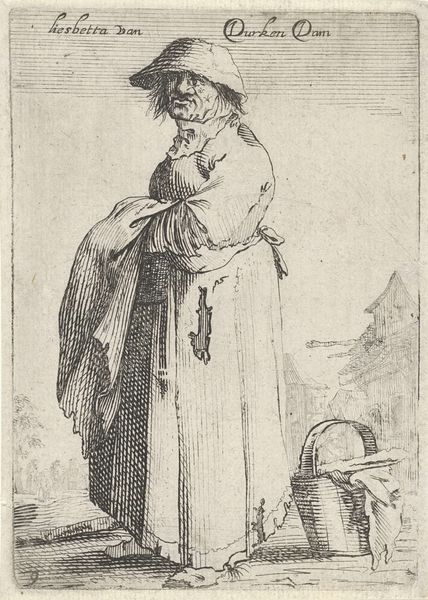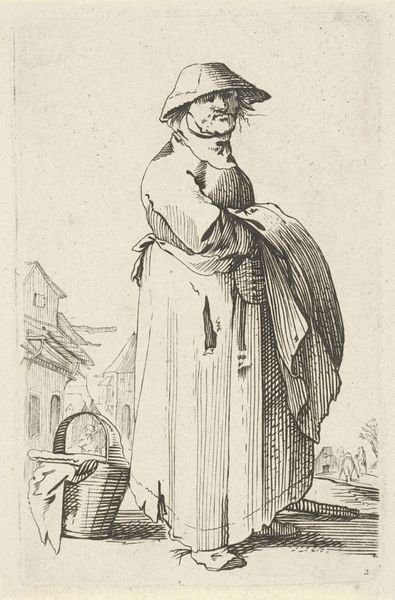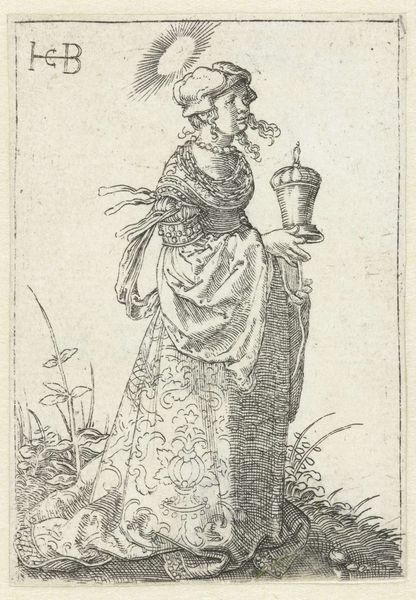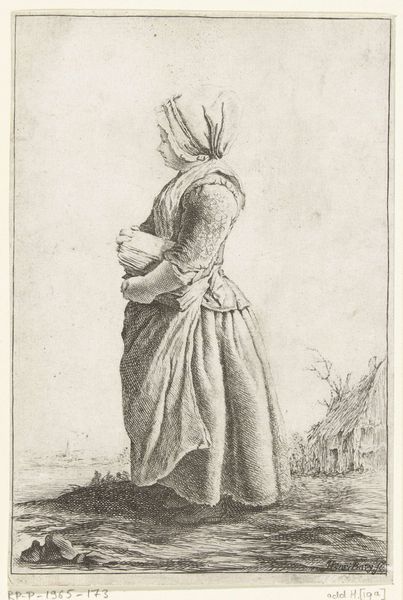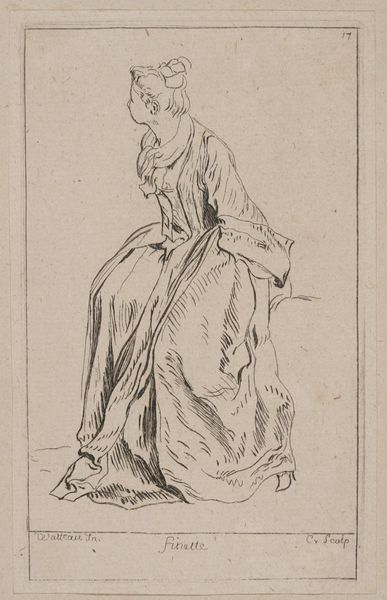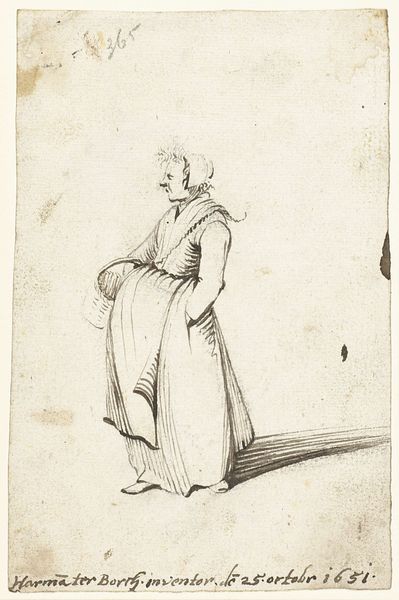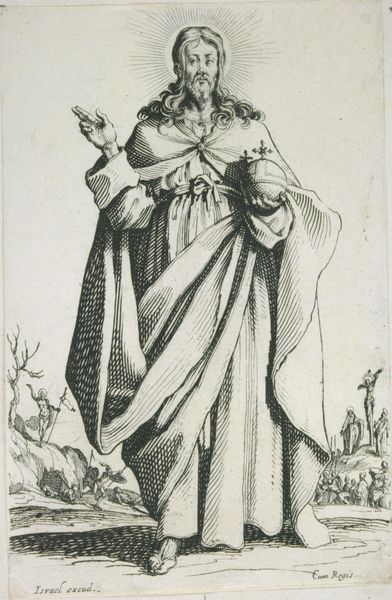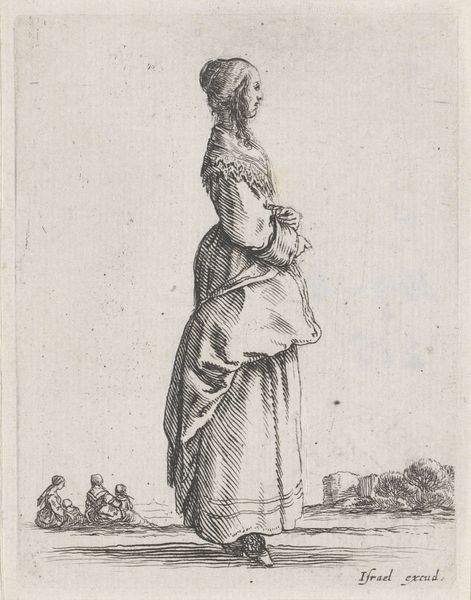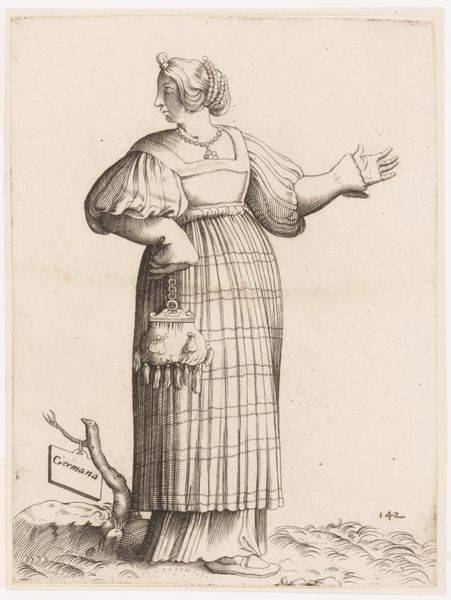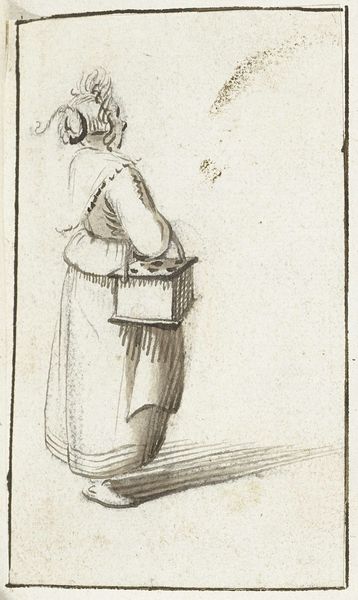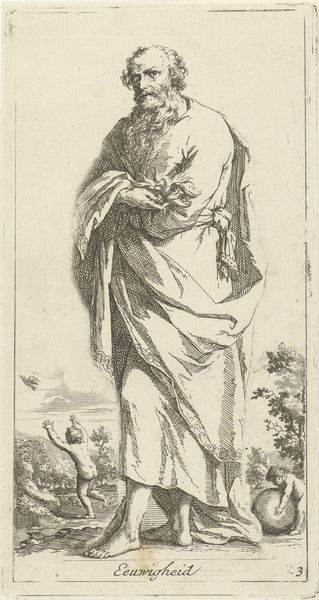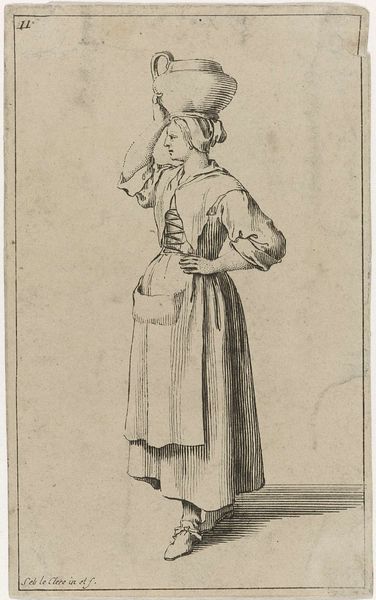
Vrouw met doek over haar arm, achter haar staat een mand op de grond 1630 - 1665
0:00
0:00
print, engraving
#
portrait
#
dutch-golden-age
# print
#
figuration
#
genre-painting
#
engraving
Dimensions: height 120 mm, width 84 mm
Copyright: Rijks Museum: Open Domain
Editor: Salomon Savery's print, "Vrouw met doek over haar arm, achter haar staat een mand op de grond", from sometime between 1630 and 1665. The title is a mouthful! The image strikes me as very direct and honest – perhaps even unflattering – in its depiction of this woman. What does this image communicate to you about the lives of ordinary people in the Dutch Golden Age? Curator: It is indeed a striking portrayal, isn't it? Savery's print functions on a fascinating intersection between genre painting and social commentary. These images of working-class figures gained traction as the Dutch Republic saw burgeoning economic inequalities. What do you notice about how she’s depicted in relation to the architectural context? Editor: Well, the architecture in the background seems a bit cramped. And the woman’s clothing also looks worn down. Curator: Exactly! This positioning highlights the social landscape of the time. The “low-life” genre gained popularity partly because of its implicit or explicit social critiques, inviting the wealthy art consumers to reflect on those less fortunate. But also, how might the display of such an image in a home impact a viewer? Editor: I guess it could provoke sympathy, or perhaps reinforce existing class structures. Was there a wide audience for prints like these back then? Curator: Absolutely. Prints offered relatively affordable art for a broader public, fostering dialogue on socio-political issues within the domestic sphere. Savery’s portrayal contributes to an ongoing discourse about the realities of everyday life. Considering the work through the lens of its cultural context reveals layers of meaning beyond the surface representation. Editor: It is thought-provoking to realize that even a seemingly simple genre scene can reflect so much about the society of the time, the political dynamic. Thank you! Curator: And thank you; reflecting on art’s historical role encourages us to consider how images impact public discourse, both past and present.
Comments
No comments
Be the first to comment and join the conversation on the ultimate creative platform.
